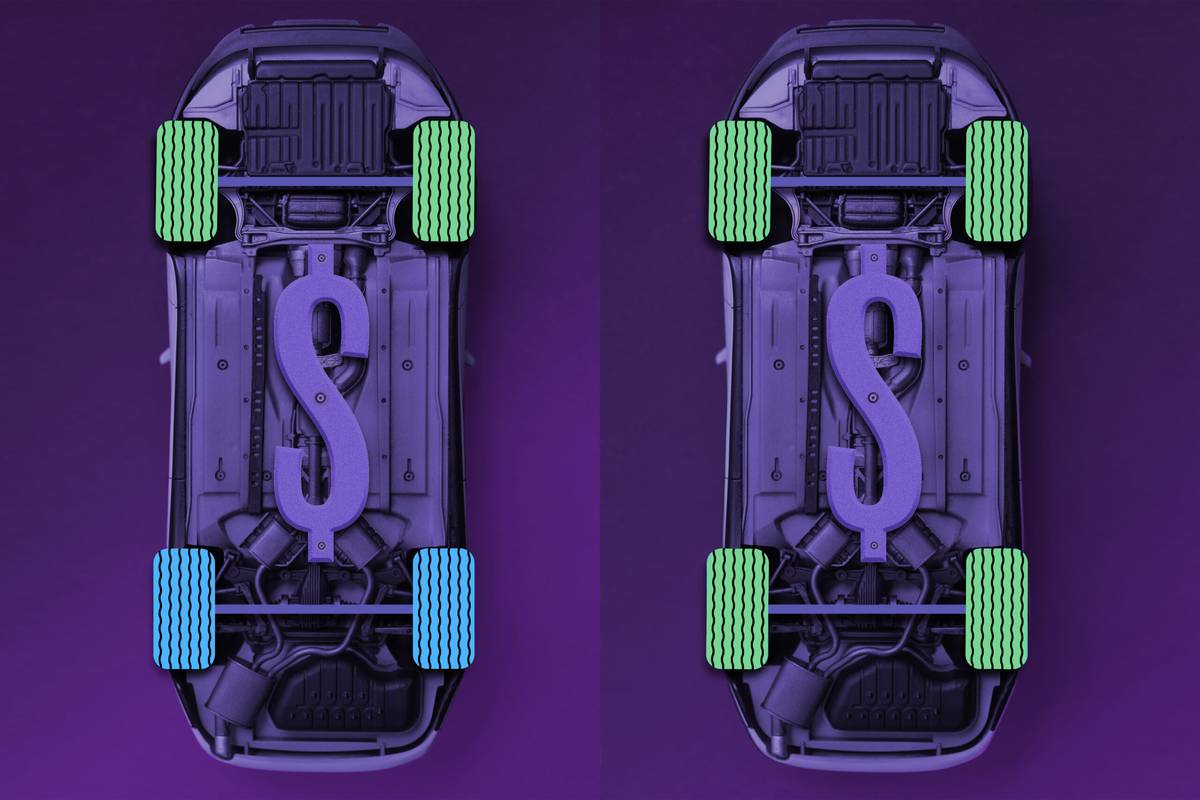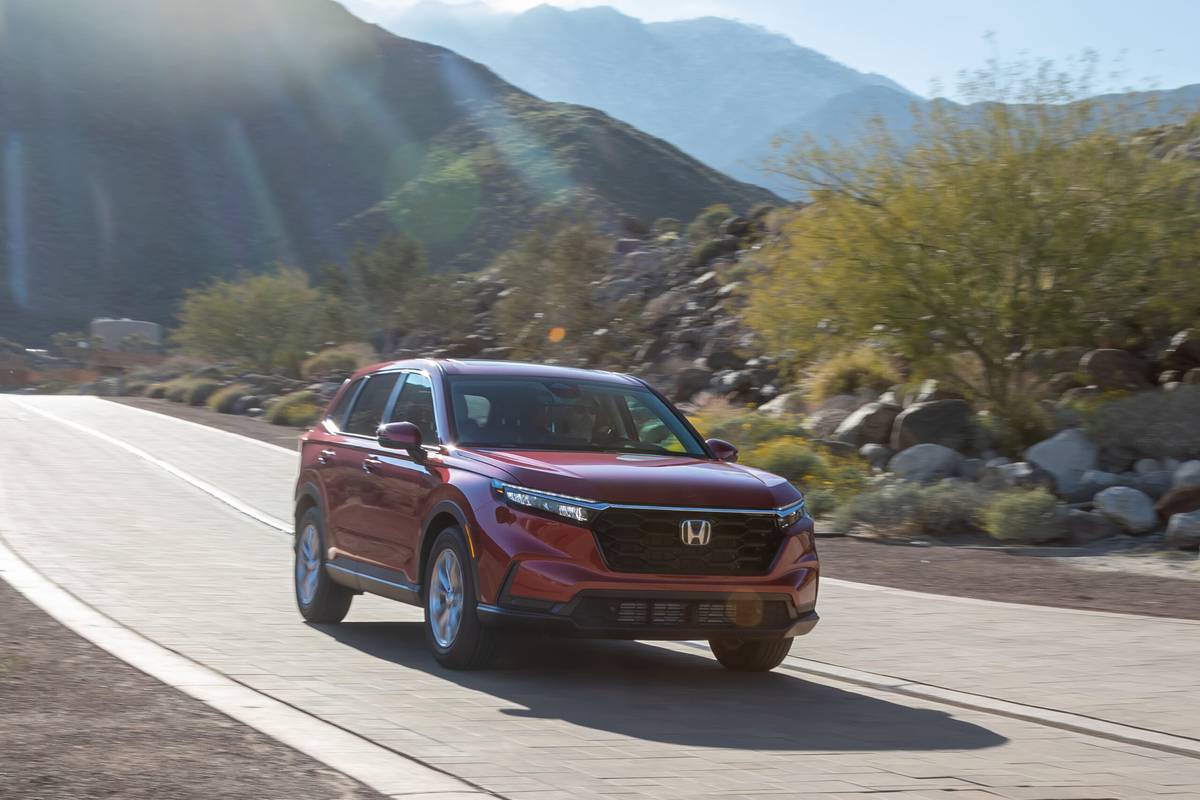How Much Does All-Wheel Drive Cost?


All-wheel drive is great to have for winter in the snow belt or mountains, as well as for peace of mind in other traction-challenged driving conditions. However, it’s not a free ride, as buying and driving an AWD vehicle can entail significant cost premiums.
Related: Which Hybrid Vehicles Have All-Wheel Drive?
That hasn’t held back the growth in demand for AWD, though, and automakers have responded by making more vehicles than ever available with it. The U.S. Department of Energy reports that 91% of light-duty vehicles produced in 1975 had rear-wheel drive, and front-wheel drive took over 10 years later. By 2017, all- and four-wheel drive had become the most common drive type, with the number of vehicles produced with either drivetrain setup rising to 59% in 2022.
Most AWD systems offered today are designed to help in bad weather or for some weekend soft-roading, not for serious off-road use. They drive just the front or rear wheels most of the time but automatically send power to the other axle when the electronics sense wheels slipping; more sophisticated systems can vary torque distribution side to side or even to individual wheels to enhance performance. While all AWD systems are electronically controlled, they increasingly vary mechanically.
More traditional AWD systems distribute power via a transfer case, drive shaft and multiple differentials. Some hybrids (particularly from Toyota) have no mechanical connection and instead add an electric motor for the rear axle, and some electric vehicles use two, three or even four electric motors to drive both axles or individual wheels. Meanwhile, more robust 4WD systems add capability for true off-roading; they are found mostly on pickup trucks and other vehicles designed for such use. The mechanical distinctions between AWD and 4WD have been muddied in recent years by electronics, but they still differ in capability and driver control.
But no matter the design, all of these systems impose similar extra costs over simpler two-wheel-drive systems.

More Expensive to Buy
For vehicles that still offer a choice of two- or all-wheel drive, the option price typically is around $1,500 or more, or you have to purchase a higher trim level to get the option (and add a couple hundred dollars in extra sales taxes and higher loan payments if you finance the car). Some vehicles — including most Subarus, many hybrids and a number of EVs — make AWD the only drive system, wrapping the cost into the sticker price.
More Expensive to Drive
An AWD vehicle is less efficient than one with 2WD for several reasons. One reason is simply the extra weight of the equipment needed to drive four wheels: You may be using two-wheel power most of the time, but you are carrying the weight around all the time.
Another reason is the added drivetrain energy loss when the system is driving four wheels. An example of the efficiency penalty is shown with Honda’s 2024 CR-V compact SUV. The hybrid version is EPA-rated for 40 mpg combined with FWD and 37 mpg with AWD, a 7.5% penalty, while the gas-only versions are rated 30 mpg with FWD and 29 mpg with AWD, a 3% penalty.
EV owners face a penalty that might matter more than the higher electricity costs: less range per charge, which means more stops for charging and fewer miles added per hour of charging. The AWD version of the 2024 Chevrolet Equinox EV uses the same battery but adds a rear motor. The second motor adds power (from a total of 213 hp with FWD to 288 hp with AWD) but cuts the EPA-rated range almost 11% from 319 miles with FWD to 285 with AWD.
More Expensive to Maintain
AWD systems add a few more boxes to tick for scheduled maintenance, though they don’t increase the overall cost a lot. A more serious potential expense, however, is the cost of repairs. There are more components that could require repair or replacement over time and use (or from a mishap). This should be a particular concern for buyers of used cars that might be near or past their warranty years or mileage.
An additional potential maintenance expense can be for tires. Tires should be rotated regularly to keep wear even, and it’s also a good idea to replace tires as a set rather than one or two at a time due to uneven wear or damage. Tires of different circumferences could increase wear on the AWD drivetrain.
Is AWD Worth the Expense?
AWD adds peace of mind and driving confidence in adverse conditions or off the pavement, and most AWD systems ask nothing of the driver as they work in the background. There are some regions of the country where AWD or 4WD is nearly a must-have — and where you will get some of the cost back in higher resale value. For example, Montana has more AWD and 4WD vehicles on the road than any other state at 71.8%, according to a survey by iSeeCars, while Florida has the lowest number of AWD or 4WD vehicles at 17.4%.
While AWD makes a big improvement in traction to get and keep going, it doesn’t help in coming to a stop — it’s no substitute for a good set of brakes and winter tires. Additionally, you should keep in mind that many of the costs of AWD will be ongoing over the time you own the vehicle.
More From Cars.com:
- AWD Vs. 4WD: What’s the Difference?
- Does an AWD/4WD Vehicle Require Additional Scheduled Maintenance?
- What Is All-Wheel Drive?
- What Does 4×4 Mean?
- Which EVs Have All-Wheel Drive?
- What’s New With SUVs for 2024?
- Big Altima Energy, Winter Edition: How Does the 2024 Nissan Altima AWD Do in Snow?
- Shop for AWD Vehicles
Cars.com’s Editorial department is your source for automotive news and reviews. In line with Cars.com’s long-standing ethics policy, editors and reviewers don’t accept gifts or free trips from automakers. The Editorial department is independent of Cars.com’s advertising, sales and sponsored content departments.

Former D.C. Bureau Chief Fred Meier, who lives every day with Washington gridlock, has an un-American love of small wagons and hatchbacks.
Featured stories




